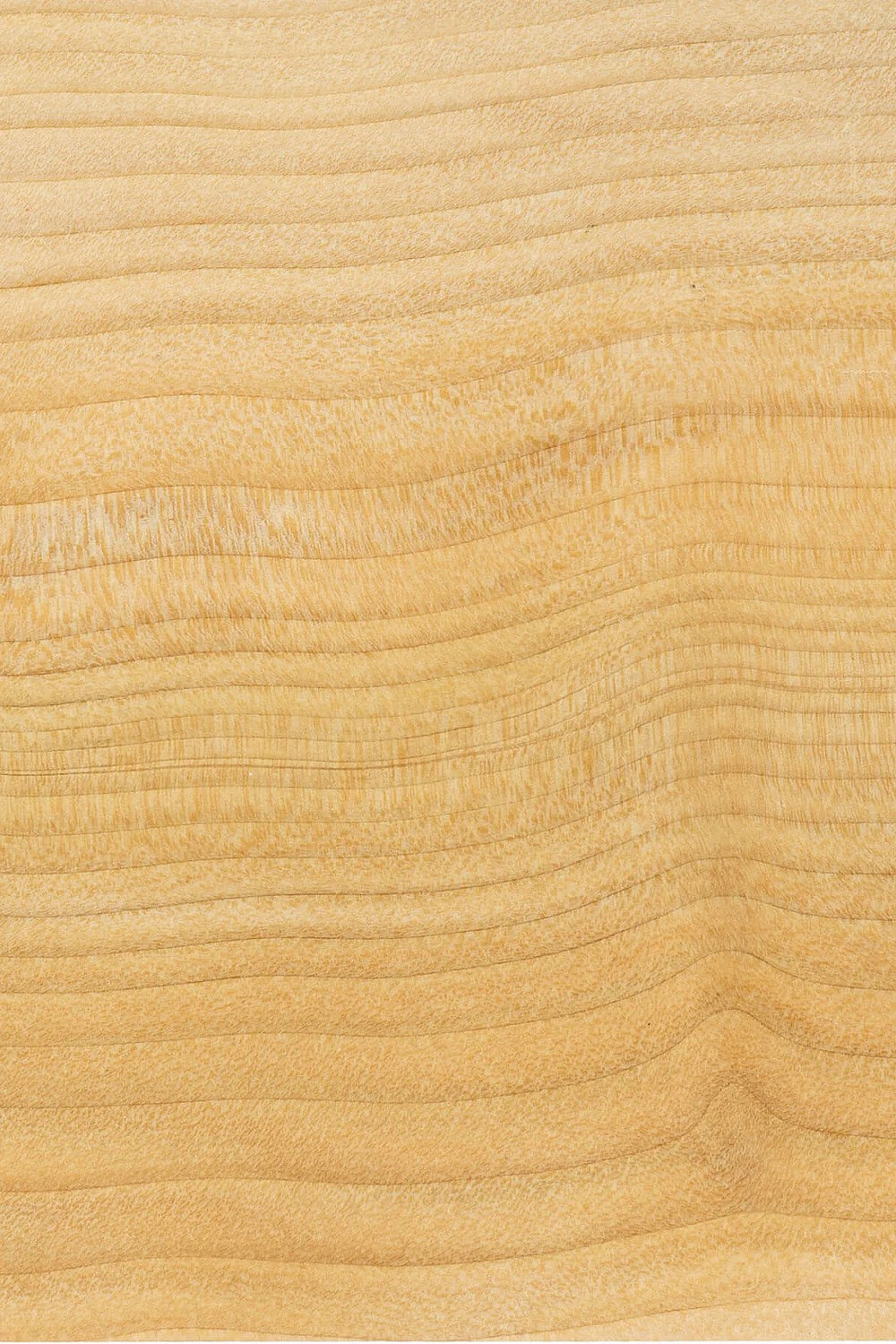
Cedar of Lebanon
Cedar of Lebanon (Cedrus libani) is a majestic evergreen conifer from the Pinaceae family, native to the eastern Mediterranean, including Lebanon, Syria, and southern Turkey. It typically grows at altitudes of 1,000–2,000 metres in mountainous regions, reaching heights of 60–130 feet with trunk diameters of 4–8 feet. Historically revered, it’s a symbol of Lebanon, often mentioned in ancient texts like the Bible for its use in Solomon’s Temple, and its wood was prized by the Phoenicians for shipbuilding.
The heartwood of Cedar of Lebanon is a warm light to medium brown, often with a reddish or pinkish tint that deepens with age, while the sapwood is a pale yellowish-white, clearly distinct. The grain is generally straight but can be slightly wavy, with a medium texture and a moderate natural lustre. It often features small, tight knots and resin canals, contributing to its character. The wood’s density is around 550–650 kg/m³, making it moderately hard and strong, yet relatively lightweight for a conifer, with good stability once seasoned.
Cedar of Lebanon is renowned for its durability, with excellent natural resistance to decay, fungi, and insects, thanks to its aromatic resins and oils. These properties made it a historical choice for outdoor construction, including beams, panelling, and shipbuilding. The wood works well with both hand and machine tools, though its resin can gum up blades and affect finishes—sanding and a clear sealant are often recommended. It’s also brittle in some areas, so care is needed to avoid splintering, especially around knots.
When worked, Cedar of Lebanon emits a rich, spicy aroma that’s both sweet and resinous, a signature trait that makes it a favourite for wardrobes, chests, and storage boxes, as the scent repels moths and other insects. In the UK, it’s often used for high-end joinery, decorative veneer, and garden furniture, where its durability and aesthetic appeal shine. It’s also popular for carving and small decorative items, as its fine grain holds detail well.
The wood is scarce and expensive due to centuries of overharvesting and habitat loss—Cedar of Lebanon forests in Lebanon are now protected, with only small groves remaining, covering less than 5% of their historical range. It’s listed on CITES Appendix III (by Turkey) and considered vulnerable by the IUCN, so most commercial supply comes from managed plantations or reforested areas. Its historical significance, durability, and fragrance make it a premium choice for projects requiring both beauty and longevity.
